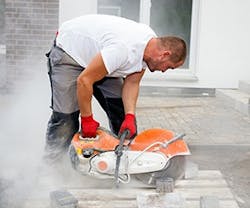OSHA Standards Protect Workers from Silica Exposure
New standards have been put in place by OSHA to protect the health of workers who are exposed to crystalline silica dust, a mineral that has been shown to cause serious lung diseases when inhaled. With over 2 million people exposed to silica in the workplace, OSHA expects the new standards to save around 600 lives as well as prevent 900 cases of silicosis each year. The rules, which contain the same information but exist as one standard for construction and one for general industry, will cut the permissible exposure limit for the dust to 50 micrograms per cubic meter of air averaged over eight hours.
Current silica exposure limits are over 40 years old and do not reflect the dangers discovered by recent research, notes OSHA. Employers will need to wet down or vacuum away crystalline silica dust for most activities as well as take measures such as limiting worker access to areas with high risk of exposure, creating an exposure control plan, measuring silica exposure levels, and providing medical examinations for workers that are highly exposed. The rule will take effect on June 23, 2016; construction firms are required to comply one year after the effective date and other industries must comply within two years.
